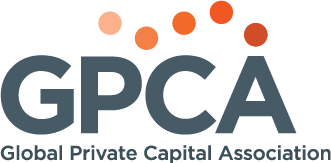2016 Global Limited Partners Survey
The 12th annual edition of EMPEA’s Global Limited Partners Survey features the views of 107 limited partners (LPs) on the emerging markets private equity (EM PE) asset class. This study aims to provide the industry with a better understanding of how LPs’ strategies for investing are evolving; what challenges they face in managing their portfolios; what their return expectations are; and which geographies, sectors and fund strategies they view as attractive.
Representing public and private pension funds, family offices, endowments, foundations, banks, asset managers, insurance companies, government agencies, sovereign wealth funds, corporations, development finance institutions, funds of funds and private markets advisors, the institutions participating in the 2016 survey are headquartered across 32 countries and collectively represent global private equity assets under management of more than US$1 trillion. Additional details regarding survey respondents are available on page 16 of the report.
Most LPs Plan to Maintain Current Allocation Levels, but Pace of New Commitments to EM PE Continues to Slow
Findings from EMPEA’s 2016 Global Limited Partners Survey suggest that the pace of anticipated new commitments to EM PE funds is slowing. While 78% of survey respondents—excluding development finance institutions and EM-focused funds of funds—plan to either increase or maintain the dollar value of their new commitments to EM PE over the next two years, a smaller percentage (40%) plan an increase than in years prior. Indeed, the percentage of LPs planning to increase the dollar value of their new commitments to EM PE has declined in each of the last four years, while the percentage of LPs planning to maintain the dollar value of new commitments has held steady at 35% to 39% over the same time period. In contrast, a larger percentage (22%) of respondents in this year’s survey plans to decrease the dollar value of new commitments to the asset class than in the 2015 survey.
When asked why they plan to increase commitments to EM PE funds, 47% of respondents indicate that they expect EM PE to deliver high returns relative to other investment opportunities, while 43% and 40% of LPs cite diversification and growing comfort with the skills and experience of EM PE fund managers, respectively, as reasons for increasing the value of their commitments. Approximately 20% of LPs indicate that they plan to increase the value of their new EM PE commitments because they are seeking greater environmental, social and economic impact through their investing. Among LPs who plan to decrease the dollar value of their commitments to EM PE, 57% specify that EM PE returns have not met their expectations. (For additional detail on EM PE fund performance and return expectations, see page 8 of the report.)
Just as most respondents plan to maintain or increase the dollar value of their commitments to EM PE, 56% do not plan a change to the current percentage of their total PE portfolio allocated to emerging markets over the next two years. Approximately one third (31%) of LPs plan to increase their percentage allocation to EM PE, while only 13% of LPs plan to decrease their percentage allocation compared to 22% of LPs in the 2015 survey.
The median respondent included in this survey—excluding development finance institutions and EM-focused funds of funds—currently allocates 11% to 15% of its PE portfolio to emerging markets, and the median allocation to emerging markets is expected to remain at the 11% to 15% level in two years’ time.
However, certain subsets of investors report that they are more likely to either increase or decrease their percentage allocation to EM PE over the next two years. Banks, assets managers and insurance companies included in the survey are collectively more likely to increase their percentage allocations (43%) than respondents as a whole. Funds of funds (excluding those that are EM-focused) and private markets advisors are the most likely investor group to decrease their percentage allocations to EM PE, followed by endowments, foundations and family offices.

